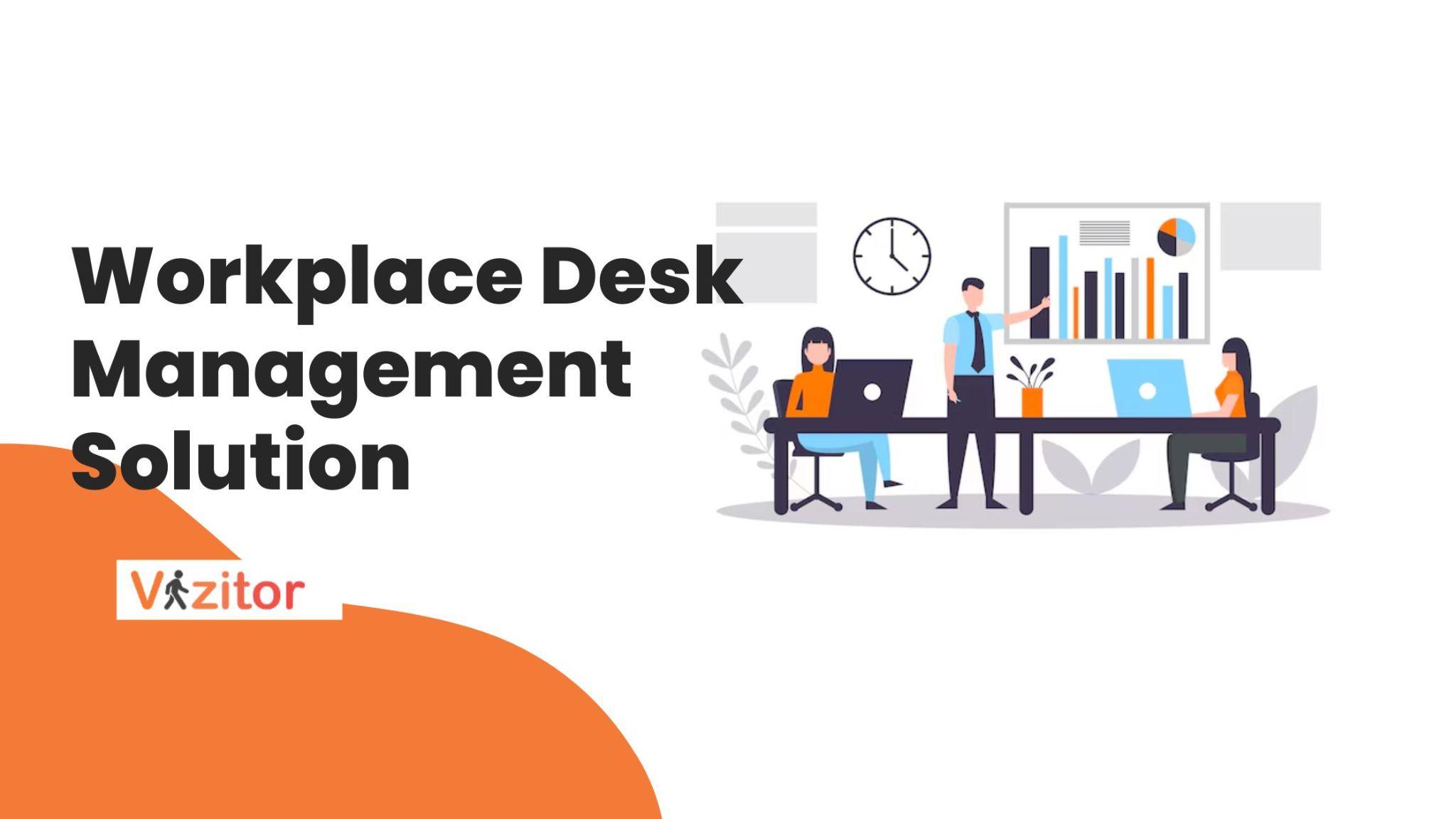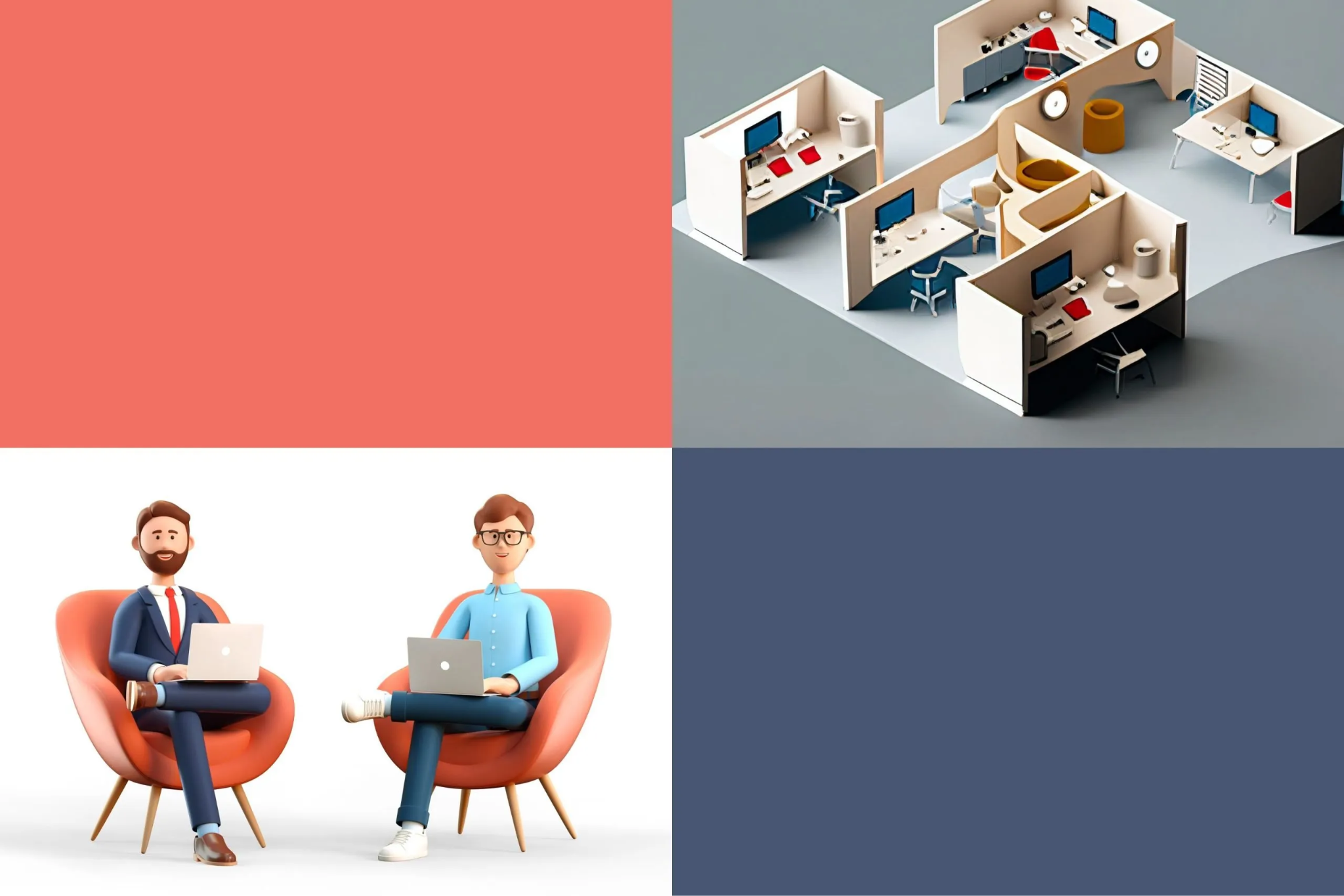Table of Content
Try Vizitor for Free!

Thu, May 30, 2024
Read in 7 minutes
Imagine a workplace where chaos and clutter at desks are a thing of the past. Picture employees seamlessly finding their workstations, tools, and resources without any hassle. This is the power of Workplace Desk Management Solutions a revolutionary approach to organizing and optimizing office desk spaces for maximum productivity and efficiency.
In today’s fast-paced business world, where every minute counts, having a well-managed desk environment can make a significant difference. It’s not just about tidiness; it’s about streamlining workflows, reducing stress, and enhancing overall work experience.
Take, for instance, Company X, a leading tech firm that implemented a Desk Management Solution. Before this, their employees often struggled to locate essential documents, tools, and equipment amidst cluttered desks.
This led to wasted time and decreased productivity. However, after implementing the solution, desks were organized systematically, with designated spaces for everything. Employees reported a 20% increase in productivity and a noticeable reduction in workplace stress.
This blog explores what Workplace Desk Management Solutions entail, why they are crucial for modern workplaces, and how they can transform your office into a more efficient and productive space. Let’s dive into the world of organized desks and enhanced productivity!
What Is Workplace Desk Management Solution?

A Workplace Desk Management Solution refers to a comprehensive approach or system designed to organize, optimize, and manage desk booking within an office environment. It involves the use of technology, software, and strategic planning to ensure that desks are utilized efficiently, resources are accessible, and workflows are streamlined for enhanced productivity.
Key Components of a Workplace Desk Management Solution
1.Desk Allocation
Assigning desks to employees based on their roles, teams, or preferences. This ensures that each employee has a designated workspace tailored to their needs.
2. Desk Reservation
Allowing employees to reserve desks in advance, especially in flexible work environments where hot-desking is common. This feature helps in managing desk availability and preventing overcrowding.
3. Desk Inventory Management
Keeping track of desk-related resources such as chairs, monitors, keyboards, and other equipment. This ensures that necessary items are available when needed and helps in inventory optimization.
4. Space Utilization Analytics
Utilizing data analytics to analyze desk usage patterns, occupancy rates, peak hours, and trends. This information enables organizations to make informed decisions about desk allocations and space utilization.
5. Integration with Access Control
Integrating desk management systems with access control systems allows seamless access to designated desks for authorized employees. It enhances security and ensures that only authorized personnel can use specific workstations.
6. Collaborative Tools
Integrating collaborative tools and communication platforms within desk management solutions fosters teamwork, communication, and collaboration among employees working in different areas of the office.
Benefits Of Workplace Desk Management Solution
Implementing a Workplace Desk Management Solution offers numerous benefits that contribute to a more organized, efficient, and productive work environment. Here are some key advantages:
1. Optimized Space Utilization
Desk management solutions help maximize the use of available workspace by efficiently allocating desks based on employee needs and usage patterns. This leads to better utilization of office space and cost savings by reducing unused or underutilized areas.
2. Flexible Work Environment
With features like hot-desking and desk reservation capabilities, desk management solutions support flexible work arrangements. Employees can choose suitable desks based on their tasks, preferences, and collaboration needs, promoting agility and adaptability in the workplace.
3. Improved Productivity
Organized desk spaces reduce clutter and distractions, allowing employees to focus better on their work. Quick access to essential resources and tools also streamlines workflows, saving time and boosting productivity levels across the organization.
4. Enhanced Collaboration
Desk management solutions facilitate collaboration by enabling teams to sit together in designated areas or collaborative zones. This setup promotes communication, idea sharing, and teamwork, leading to improved collaboration and innovation outcomes.
5. Resource Optimization
By tracking desk usage and resource availability, these solutions help optimize resources such as desks, chairs, monitors, and peripherals. Organizations can ensure that necessary resources are available when needed, reducing wastage and improving resource management efficiency.
6. Employee Experience
A well-managed desk environment contributes to a positive employee experience. Employees appreciate having organized workspaces tailored to their needs, which can boost morale, satisfaction, and overall engagement levels within the workforce.
7. Cost Savings
Effective desk management can lead to cost savings by optimizing space utilization, reducing real estate footprint, and minimizing operational inefficiencies. Organizations can allocate resources more efficiently, resulting in cost-effective workspace management.
8. Data-Driven Insights
Desk management solutions provide valuable data and analytics on desk usage, occupancy rates, peak hours, and trends. These insights help organizations make data-driven decisions about workspace planning, resource allocation, and future workplace strategies.
9. Security and Compliance
Integrating desk management systems with access control measures enhances security by ensuring that only authorized personnel have access to specific desks or areas. This helps maintain workplace security protocols and compliance with regulatory requirements.
10. Scalability and Adaptability
Desk management solutions are scalable and adaptable to changing business needs, workforce dynamics, and office layouts. Organizations can easily adjust desk allocations, configurations, and policies to accommodate growth, reorganizations, or new workplace trends.
Factors to Consider When Building A Desk Management Strategy

Building an effective desk management strategy involves considering several key factors to ensure optimal utilization of workspace and resources. Here are some factors to consider:
1. Workplace Layout
Assess the office layout and design to determine the best placement of desks and workstations. Consider factors such as team proximity, collaboration zones, and access to amenities.
2. Flexibility
Determine the level of desk flexibility needed, such as hot-desking (shared desks), assigned desks, or a combination of both. Consider the flexibility required based on employee roles, work patterns, and office dynamics.
3. Technology Integration
Choose desk management software or tools that seamlessly integrate with other workplace technologies, such as access control systems, collaboration platforms, and communication tools.
4. Employee Preferences
Gather feedback from employees regarding their desk preferences, work habits, and ergonomic needs. Consider factors like natural light, noise levels, and proximity to amenities when allocating desks for Smart Workplace Solution.
5. Resource Availability
Ensure that desks are equipped with necessary resources such as ergonomic chairs, adjustable desks, monitors, and storage options. Optimize resource allocation based on employee requirements and usage patterns.
6. Space Utilization
Analyze space utilization data to identify peak usage times, underutilized areas, and opportunities for space optimization. Use this information to make informed decisions about desk allocation and layout adjustments.
7. Collaboration Needs
Consider the collaboration needs of teams and departments when designing desk layouts. Create collaborative zones or areas with shared resources to facilitate teamwork and communication.
8. Security and Access Control
Implement access control measures to ensure that only authorized personnel have access to specific desks or areas. Integrate desk management systems with access control solutions for enhanced security.
9. Scalability
Plan for scalability and future growth when designing a desk management strategy. Choose flexible solutions that can accommodate changes in workforce size, office layout, and business requirements over time.
10. Employee Experience
Prioritize employee experience by creating a comfortable, efficient, and user-friendly desk environment. Consider factors like workspace customization, amenities availability, and wellness initiatives to enhance employee satisfaction and productivity.
Vizitor - Providing Expert Desk Management System
Vizitor seamlessly integrates with desk management systems, offering valuable support in various aspects of workspace organization and visitor management. One key aspect is desk reservation integration, where Vizitor enables visitors or employees to reserve desks in advance, ensuring that workspaces are efficiently allocated and ready for use. This integration streamlines the desk reservation process, enhancing the overall efficiency of workspace utilization.
Moreover, Vizitor integrates with access control systems to provide authorized access to specific desks or areas based on visitor permissions. This integration enhances security measures by ensuring that visitors only have access to designated areas approved by the desk management system, contributing to a secure and controlled workspace environment.
Furthermore, Vizitor’s space utilization analytics offer valuable insights into visitor traffic, peak visit times, and occupancy rates. This information enables desk management systems to optimize desk allocation, identify underutilized areas, and make data-driven decisions about workspace planning and resource allocation.
In summary, Vizitor’s integration with desk management systems enhances the functionality, security, and efficiency of desk allocation, visitor management, and workspace utilization processes. It contributes to a streamlined and organized workspace environment, ultimately improving productivity, collaboration, and overall visitor experience within organizations.










